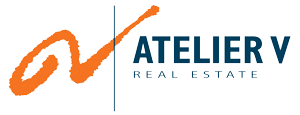
Buildings can look right at first glance. And even equal in price. Yet there are differences that make one building less efficient and more expensive to set up for the intended work processes than another building. The purchase price is the same, but the value for the organisation using it is different.
Comparing two buildings is like comparing apples and pears: easy to spot the differences at first glance, but anything but easy to determine which building is the best fit (‘fitness for use’) for a particular user or target group. Usually, it is only asked afterwards how satisfied the user is with a building, instead of simulating the consequences of certain accommodation decisions in advance.
REN versus NEN 8021
As owner/landlord, but certainly, as user/tenant of a building, you want to know to what extent the accommodation meets the intended purpose of use.
We apply the REN standard, which has been tested for over 20 years and recently completely renewed, for various types of real estate such as offices, industrial buildings, educational buildings, shops and homes. Since 2014, the NEN 8021 method (for offices only) has also been available for mapping and evaluating the desired accommodation performance by the user and the actual performance of the current or intended accommodation.
Objective assessment promotes communication
The REN method provides an objective valuation of the requested and delivered user performance of various types of buildings. In addition, the location and building characteristics are compared with the wishes and requirements for use in a transparent manner. The user requirements of the organisation to be housed are recorded in a user profile together with the relative weight that the user assigns to it and serve as a reference for the extent to which the required performances are actually delivered. All components of a learn/work environment, such as real estate (RE), facility management (FM) and information communication technology (ICT) are addressed in the REN 3.0.
The REN 3.0 matching of supply and demand takes place on themes such as:
- Attractiveness / Experience.
- Accessibility / Logistics.
- Amenities / Supporting Services.
- Adaptability.
- Sustainability / Building Intelligence / Environmental Performance.
- Health / Safety & Security / Well-being.
- Maintenance Management.
Together with you, we determine the degree of importance for each of these themes by assigning measurable weighting factors. In this way, insight is quickly gained into the differences between the wishes of the user and potential accommodation solutions. It can be used for a building as well as for the screening of a real estate portfolio of multiple buildings spread regionally, nationally or even internationally.
Making the right choices
The comparisons made with the REN standard enable you to make an objective choice between the possible alternatives. No building will deliver a 100% match. The accompanying report explains the possible solutions to close or narrow the gap (mismatch) resulting from the confrontation between supply and demand. The weights that have been assigned to the user’s wishes in advance are leading.
More information or a no-obligation conversation? We are happy to serve you please feel free to contact us.


